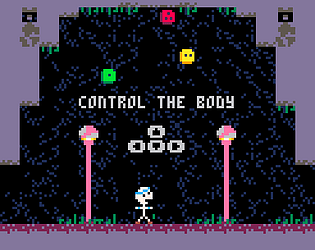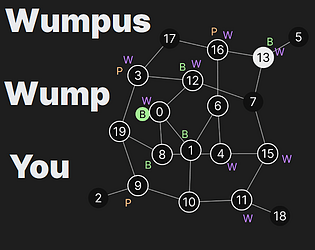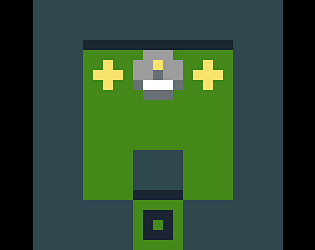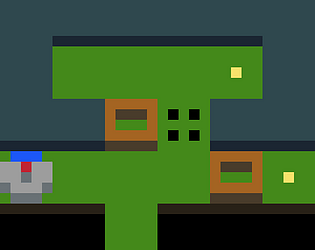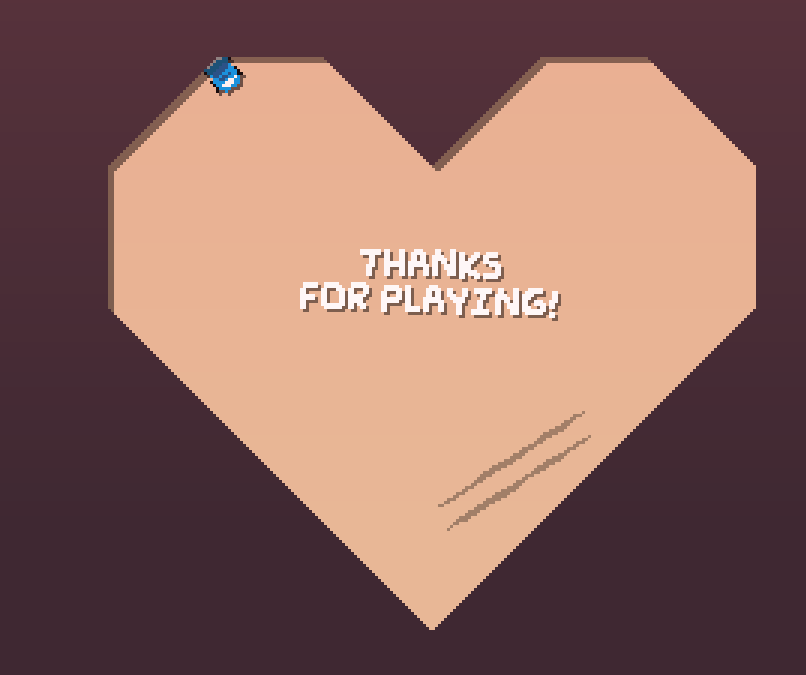glad you enjoyed it! thanks for playing!
gate
Creator of
Recent community posts
you did very well to get that far! there's a definitely a lot of "exploration" involved in the solutions -- i don't think many players can visualize all the steps upon first seeing a puzzle; takes some trial and error to formulate a plan.
i do know of multiple players who wrote down notes to solve the final level; could help if you're having trouble keeping track of the state space (but first you have to make sure you understand the mechanics fully).
no worries! thanks for the clarification.
i have noticed some of the terminology feels inconsistent between games and some is kind of ambiguous (e.g. i've gotten confused whether "below" means lower on the screen, or stacked underneath another card).
regardless i'm really enjoying the pack even though many of the variants feel slightly out of reach for me in terms of difficulty. i keep poking away at it even when i'm getting trounced. i think the aesthetic coherence and excellent music are a big part of it!
and maybe not intentional, but these rule quibbles do play into the "mystery" theme somewhat. it's been enjoyable to read between the lines in some of the games and discover that, oh, i can use monster attack slots as free cells, etc. i think most board game manuals would call these implied rules out explicitly, but i do think there is a case to be made for not spelling out too much. it gives it a unique feel, and it's sort of up to you whether you want to intentionally lean into that or not.
Not sure I understand the rules for fork solitaire -- I am on the updated patch w/ the new rules explanation, but I often cannot create forks. I understand that I cannot create a fork ABOVE another fork, but there are many cases where I cannot create a fork below another fork too? Is there some branch limit or other unstated rule?
Here's a hastily put-together example of what I mean:
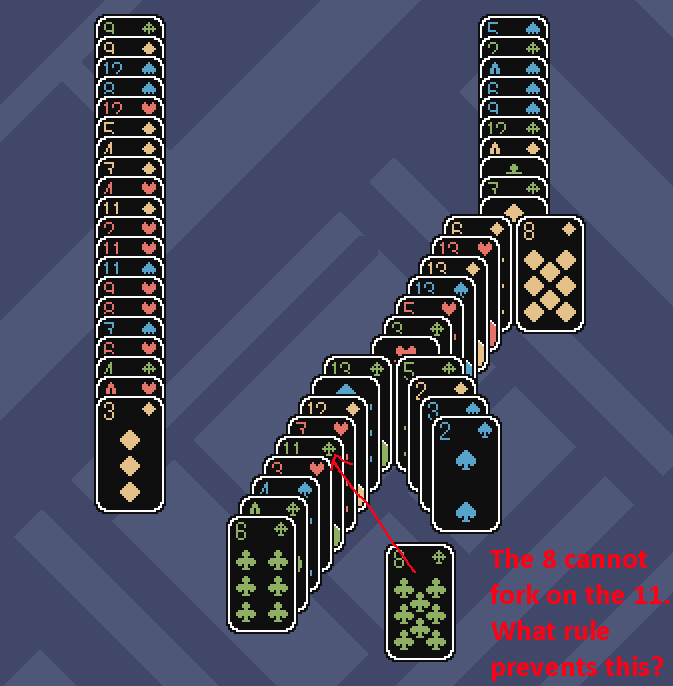
hey, glad you enjoyed it so thoroughly! it really takes quite a bit of work to beat all the levels; glad you came back to it.
sometimes it takes me two or three tries with a game before it digs its way into my brain, too. i kind of love that feeling -- where i go "i would like to like this" to finally "i get it and i love this". i like exercising that intentionality about media, or really just anything in my life. if i just went w/ my initial reaction the world would be so much bleaker. digging past the surface is often very rewarding.
i have adhd and the eclectic nature of my games is not lost on me -- i lean into it because i've realized channeling that part of myself gives people a little window into my experience and sharing that feels very valuable to me.
hey thanks :)
game launched w/o a tutorial but i saw it was needed pretty quickly and cranked it out in about a day, so i'm glad it comes off polished lol. i didn't really have space for it on the cart, so i took the gameplay cart, ripped out a bunch of code i didn't need, and then hacked in the tutorial. the game is actually 3 carts in all: menu/intro, game, and tutorial.
a bit over-scoped from my original vision, but hey, multi-carts in pico8 aren't too bad a player experience; just like a second of load between them.
what a sweet review -- thanks omega! that's very flattering.
not sure if you were able to figure out the end. i can give you a few hints. they'll get more explicit each bullet point down.
(BIG SPOILERS FOR END OF GAME)
- gurer'f n pbeare-pnfr zrpunavp va gur tnzr gung unfa'g orra "hfrq" hagvy guvf cbvag (nygubhtu v'q or fbeg bs fhecevfrq vs lbh unira'g frra vg). lbh arrq vg va guvf yriry.
- gur zrpunavp vaibyirf gjb gryrcbegref.
- gur tubfg jnagf gb rfpncr guvf jbeyq.
if you're still stuck, here is the explicit instruction on the goal of the level (but not the steps to solve it):
(BIG SPOILERS, SOLUTION FOR END OF GAME)
- lbh zhfg chfu gjb pbaarpgrq gryrcbegref gbtrgure arne gur tenir. guvf jvyy pnhfr gurz gb rkcybqr naq qrfgebl gur tenir.
it's not necessarily all fake paths -- it's more identifying what the player will likely do and trying to force them to use the mechanic in a way that's surprising. i like to write down all the corner cases i find while i'm testing the game and then try to build puzzles around those cases.
iteration is also very important for puzzle design. i test a lot and try to improve puzzles i'm not happy with, and cut out ones that will never work.
for the 1,1 coin door, it is impossible to get normally (you can't jump the spikes). you have to use another of your abilities. :)


